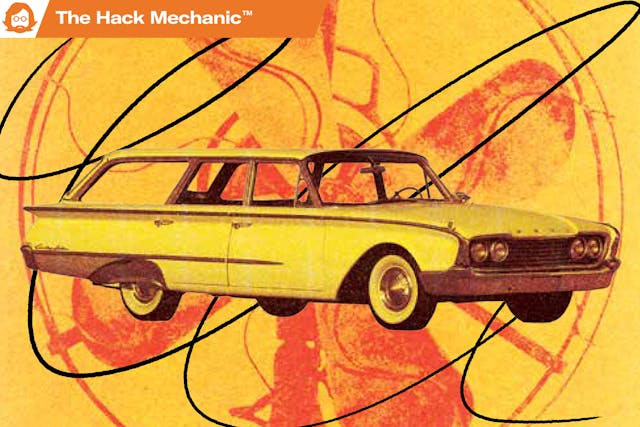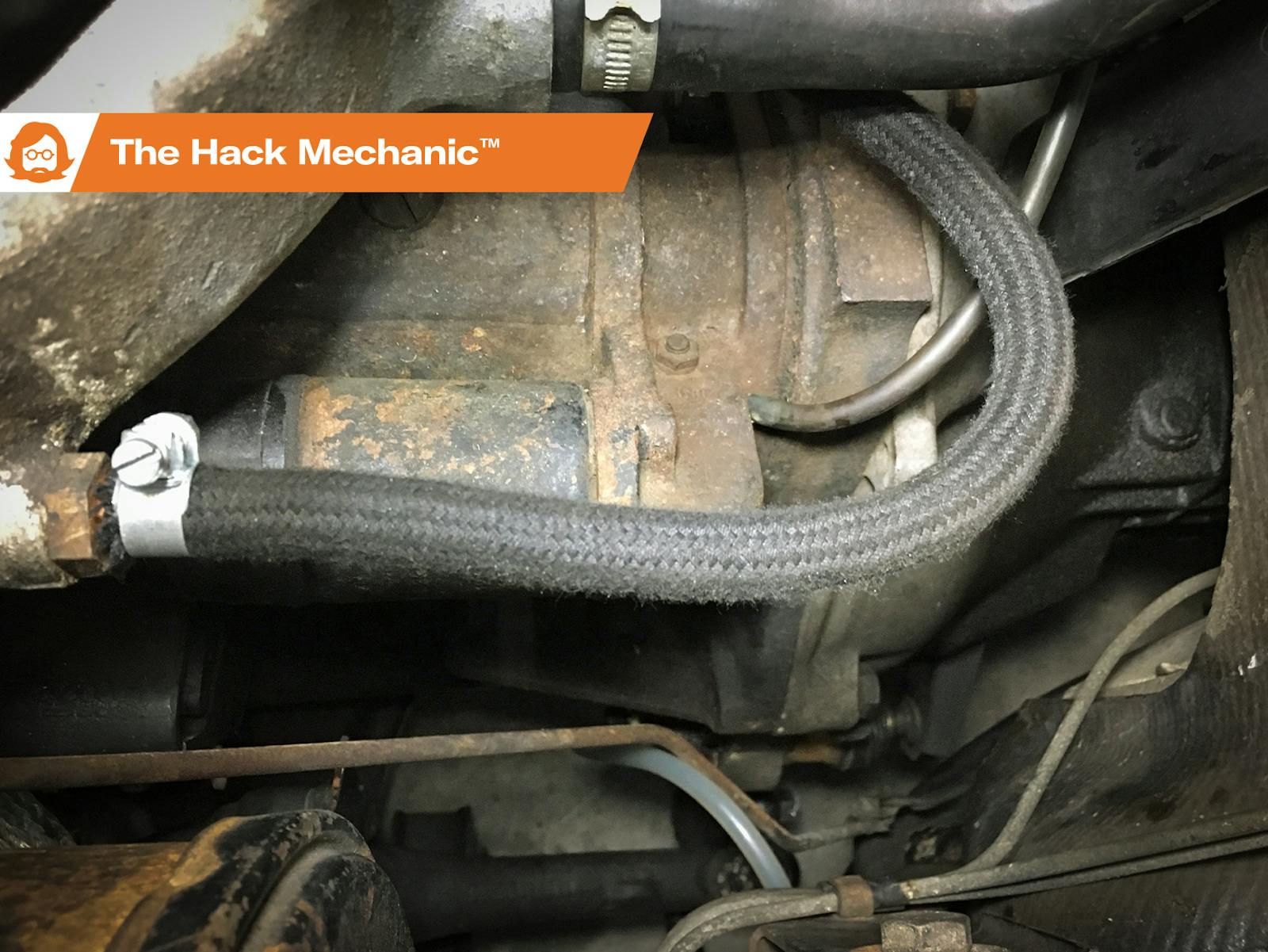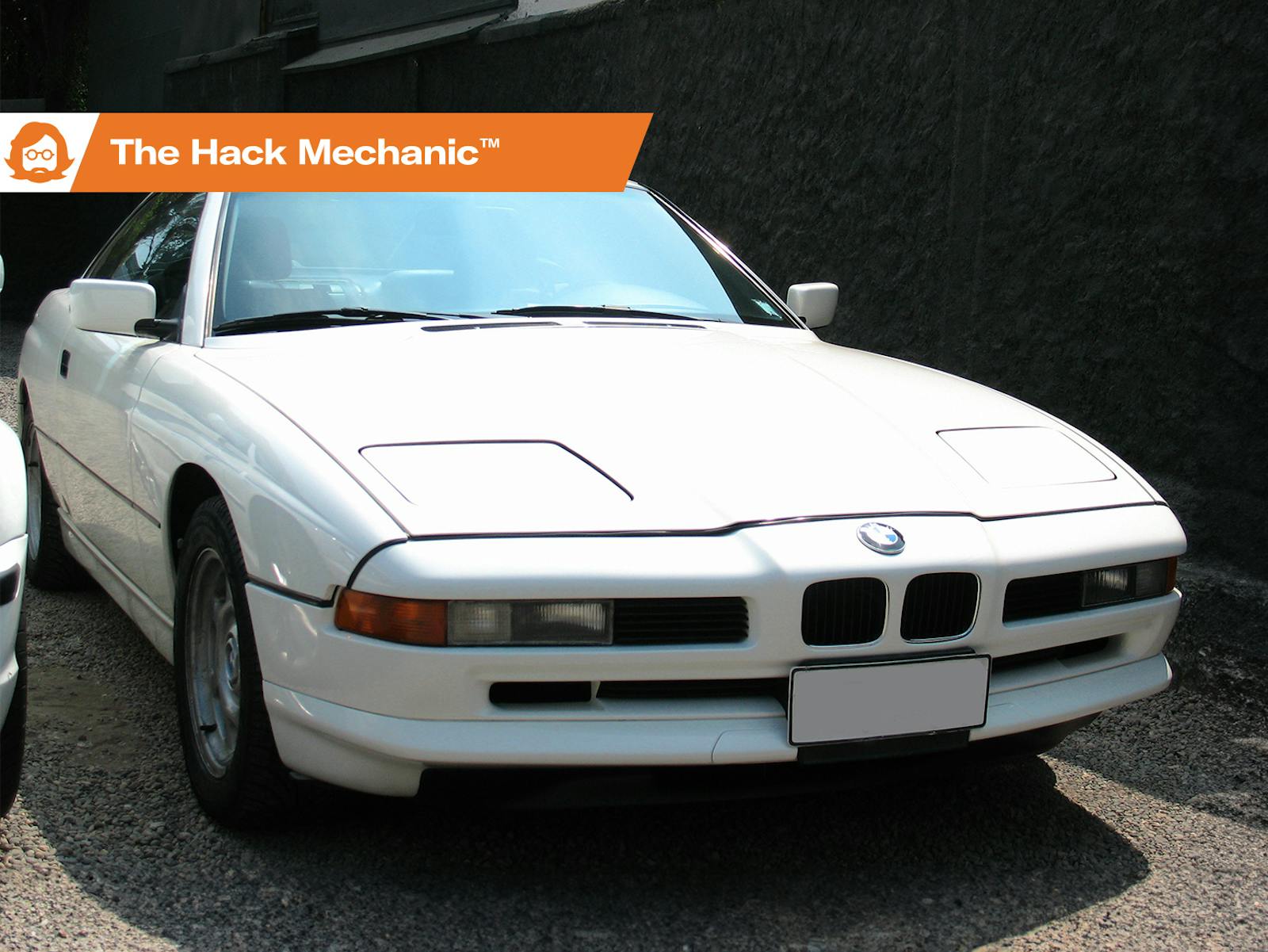Hot Under the Collar: Cooling-system cures and piston ring problems

This article first appeared in Hagerty Drivers Club magazine. Click here to subscribe and join the club.
Ken Levin writes:
My 1960 Ford Country Sedan runs hot, particularly in traffic on warm days. The car is rebuilt to stock specs and equipped with the original radiator and four-blade fan. No air conditioner. What are my options to improve the cooling, and which do you recommend?
Hot running can be caused by many things (stuck thermostat, rusted water pump impeller, sediment in the water passages of the block), but overheating in warm weather usually means that the radiator’s cooling capacity is insufficient. Running additionally hot in traffic is a classic symptom of inadequate airflow.
Since your radiator is 62 years old, I’d recommend upgrading to something with a three- or four-row core. I’m not a big fan of re-coring radiators, but if you want to keep yours original, and if you know of a good, old-school radiator shop, you can certainly go that route. Replacing the radiator is a bit confusing, as the 1960 Country Sedan doesn’t appear to be as well-represented in databases as its Ford brothers. I believe the radiator is the same as that for a 1960–63 Galaxie. However, unless you’re certain that something is a correct replacement, I’d recommend calling Eckler’s Automotive (877-305-8966), as it should be able to confirm fitment, and it has both original-looking copper radiators as well as aluminum. Personally, I don’t care for the look of aluminum radiators in vintage cars, but they’re usually a less expensive option.
Regarding the airflow, a shroud around the mechanical fan should improve cooling in traffic, but I’m seeing conflicting information on whether your car had one. Some folks would advise an aluminum radiator with one or two electric fans directly attached to it, but I’m not a, er, fan of this approach. The electric fans that come on inexpensive radiator-fan packages are usually junk. They often move less air than advertised and don’t last. Also, I resist the deletion of a reliable belt-driven fan, unless there’s no alternative.
I’d update the radiator and see how much of the problem that solves. If it still runs hot in traffic, try changing to a five- or six-bladed fan inside a full shroud. If that doesn’t work, then try shrouded high-quality electric fans.
Randy Mertz writes:
I have a ’64 Chevy Impala with an original 140,000-mile 327 engine. It runs and drives after sitting 15 years in the barn, although the power brake booster is shot. I can get the car started, but after warmup, it smokes oil terribly and oil drips out the exhaust pipes. Mechanics have told me the rings are bad, but there’s no blowby coming out of the oil-fill tube, and the engine is pretty peppy when I step on the gas. Is it the valve guides and seals that are letting oil into cylinders?
Sorry to be the bearer of bad news, but I have to agree with the mechanics.
Fog-like oil burning usually is caused by something in the cylinder-piston-ring interface, and if the car sat for 15 years, it could be that the rings are stuck. Sometimes they free up with use, sometimes they don’t. In contrast, worn valve guides and leaky valve seals usually result in oil burning at start-up and during deceleration.
I’d recommend performing a leak-down test to get as much information as possible. Since you note that the power brake booster is shot, you should check that what’s dripping out the exhaust is oil and not brake fluid. It’s possible for brake master cylinders to fail, leak brake fluid into the booster, and for the fluid to get sucked into the intake manifold. When burned, brake fluid smoke is white (oil smoke is bluer) and has an acrid, bitter smell.
***
Rob’s latest book, The Best of the Hack Mechanic™: 35 years of Hacks, Kluges, and Assorted Automotive Mayhem, is available on Amazon here. His other seven books are available here on Amazon, or you can order personally inscribed copies from Rob’s website, www.robsiegel.com.
Check out the Hagerty Media homepage so you don’t miss a single story, or better yet, bookmark it. To get our best stories delivered right to your inbox, subscribe to our newsletters.


While not in play here I would also recommend that if you have built up a new engine and have added power look into a new Radiator.
The prime reason is you added power and power generates heat. This will not only better cool the engine but also protect the money you just spent on the engine.
I have seen guy drop $20K on an engine and try to run it on the stock 1968 Harrison 2 core Radiator risking a major rebuild.
New Radiators are safe insurance.
I agree in general, more power will need more cooling.
Just remember that it takes only X power to move the car at Y speed regardless of the max power available. At first order effects, a higher power motor won’t make more heat at speed Y. It will accelerate faster, climb hills faster, and have higher top speed, which will make more heat and require more cooling. The original cooling system, if functioning properly, should be adequate around town.
Another idea for smoking at idle. I had a ’74 Chevy truck with a 350 that smoked at idle, really bad. This truck also sat for many years before I bought it. I pulled off the head covers and they were filled with old, burned crusty oil solids and oil was coming up through push rods, and pooling in the covers instead of draining back down into the oil pan. I used a screwdriver and busted it all up and cleaned it out the best I could, then changed the oil a few times after letting it idle in the driveway to get all that crap out. After that it ran like a champ and got me through most of my college years.
Yep, an old carpenter friend of mine had the same issue. He never changed the oil, just added. Finally, the valve covers started leaking too much for him so I volunteered to replace them. It was so full of sludge that the drain back holes were plugged. After cleaning out about a pound of goo on each side, it quit burning oil! Imagine that! Those old Chevy small blocks are tough.
Good notes Rob;
On the oil burner. Since it sat for so long. I like Dean’s idea. I’d also do an oil change, but use one quart of dexron transmission fluid, for it’s super high detergent level. Drive it a bunch, and while it’s warm dump the oil, then do it again. After the second oil change, take it out and really put some load on it, by accelerating and decelerating hard; this will help to free up a stkct piston ring set.
For the overheating issue, I would go with a viscous clutch fan and a shroud. Both are nonpermanent and shouldn’t affect the value
I second Swamibob on giving the smoker a good run with a quart of ATF in the crankcase. Personally however, I would say for round 1, run it enough to get the engine up to speed, then change the oil. That ATF will loosen up a lot of funk in the inside of the engine, and you don’t want to be 50 miles from home if oil pressure starts going south
Auto trans fluid is non detergent oil!
rislone is made for that ,instead of using atf. drive it and change it once a week. it won’t use any oil when its clean. if the pistons are stuck and it won’t turn over. drain out the oil fill it with white vinegar, let it sit 24 hours. drain out the vinegar [ its super corrosive ] fill it with oil run it an hour and change it again. the vinegar it will desolve rust. works in manual gear boxes or bulldozer final drives also. frees them right up when nothing turns etc.
In general I’d make sure the cooling system is in good shape as Rob says, with the rad being the prime suspect. In addition I have used the Evans Waterless Coolant in my 1969 Lotus Elan and it works beautifully. It raises the boiling point to 375F and eliminates local boiling at hot spots in the head. The cooling system runs at close to 0 psi so the hoses don’t harden up at all when hot, so less stress there taboot. The car never gets over 95 C in the hottest Canadian weather we get (yeah it can get hot up here) and typically runs around 80 C on the highway. I have an 82 C thermostat in it and use a three core rad with an electric cooling fan. The fan only kicks on in the city.
Love your columns Rob, I’m going to get your books.
Regarding the oil burning. I was in college my first car (a 1976 FIAT) was totaled after I T-boned a Delta 88 that turned left in front of me. Desperate for a cheap car I turned to my uncle who is a mechanic with his own shop. He had recently purchased a 1978 2-door Chevy Impala (305 cu. in.) from a lady customer of his (this was in 1985). The previous owner didn’t believe in oil changes and as a result it was smoking pretty badly. Upon removing the valve covers there must’ve been at least a quart of oil under each valve cover along with so much sludge that the drain holes were plugged up and with the oil seeping through the valve guides).
He cleaned out the sludge under the valve covers, drained the oil and refilled it with fresh oil mixed with if I recall correctly, kerosene). He then let the car idle for a few hours (never revving it). Drained it and repeated a few more times and changed the plugs once he it wasn’t blowing smoke anymore.
He was hesitant to sell it to me stating, “It’s not burning oil now, but not sure how long that it will stay that way” and he didn’t want me to be upset with him if it eventually needed more major work. I was in my junior year of college, commuting to classes so I was desperate. In the end he sold it to me for what he put into it which included what he paid for the car, a quick re-spray of the sides to fix the scratches and dings, and the minimal engine work ($2,500).
I ended up putting nearly another 100K miles on that car. towards the end it was puffing smoke at start-up which pointed to the valve guides (which was common for that engine). Sold it for $2,000, although the six-speaker Kenwood system with amp and graphic equalizer that I had put in it, contributed to the selling price.
Lots of great memories with and in that car (if you know what I mean).
For the overheating problem, my experience is that a modern radiator is the key, but my number two recommendation is a Derale Flex Fan in the largest diameter that will fit. These are a low tech alternative to a fan clutch and extremely efficient. I had a Sunbeam Tiger, notorious for inadequate cooling, and those two things allowed it to both run on the highway, around town and even idle in humid 90 degree mid-Atlantic weather without any issues.
Two things very commonly overlooked are coolant mixture, and the radiator cap. Both can result in “running hot”. 50/50 dors not mean 1 gallon of antifreeze and the rest water. Cap pressure is really important, a lot of older cars take a 4 to 7lb. cap with an expansion tank/overflow bottle. It’s easy to end up chasing your tail.
Also check ignition timing, the fan clutch and make sure it’s not running lean. Rebuilding to stock us not going to make the radiator suddenly fail or require a higher capacity cooling system.
A before and after video of a farmer using a Sea Foam hot soak method on his old smoking Ford truck.
https://youtu.be/agAWXnT4-EQ
https://youtu.be/prXiQgVVnDY